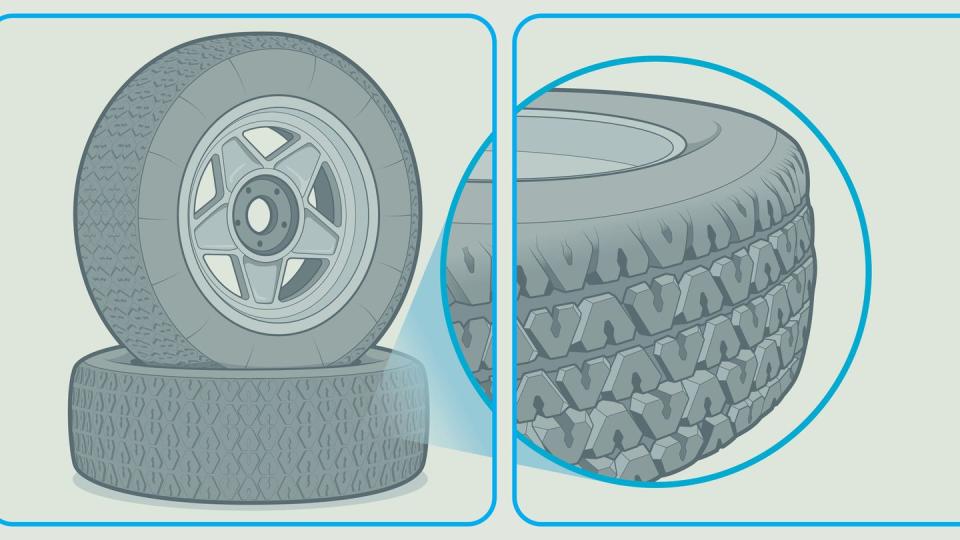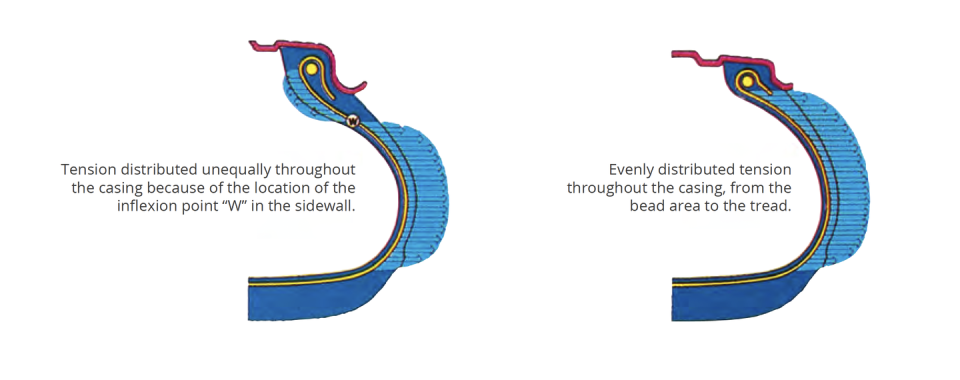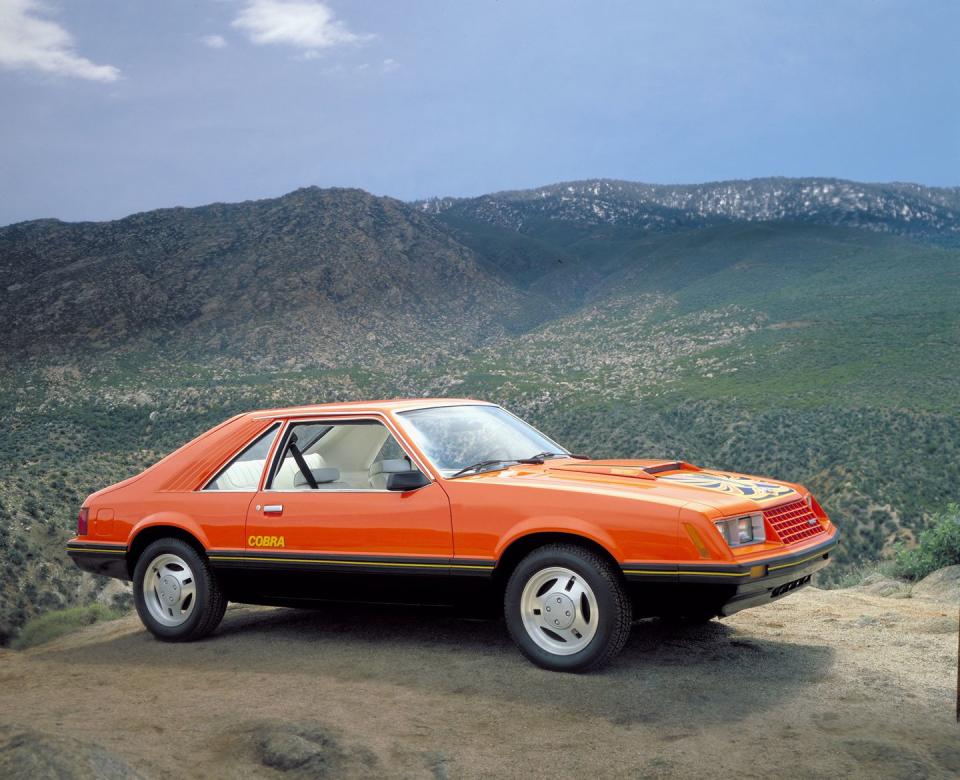Michelin's Infamous TRX Tire Was Way More Clever Than You Realize

Three letters can strike fear into the hearts of Seventies and Eighties car enthusiasts: TRX. I am referring to Michelin’s TRX tires, one of the first ultra-low-profile tires to hit the market. The TRX arrived in the mid Seventies alongside Pirelli’s competitors, the Cinturato P6 and P7. What the TRX is best remembered for these days is its metric wheel size.
That’s where the fear bit comes in. Say you just bought a 1982 Ferrari 308 GTBi. You might be shocked to see the numbers written on the tire sidewall: 220/55R390. What the hell is that all about?

Of course, 220 makes some sense, being the tire width measured in millimeters, just as it always is, even though tire widths almost always end with the number “5.” Fifty-five is your aspect ratio (percentage of a tire’s sidewall height divided by width). It’s 390 that’s weird. It represents the wheel size in millimeters. As you likely know, wheel sizes are usually expressed in inches, and wheels are built to whole numbers. It’s strange that we use metric for one tire dimension and imperial for another, but that’s how it’s always been, and always will be. But for its flagship tires of the mid Seventies to mid Eighties, Michelin decided to do something different.
First, some history. Dunlop, Michelin, and Pirelli all launched their first low-profile tires in the mid Sixties, and that started the trend towards minimizing sidewall height. “If you have more wheel diameter and less sidewall height, you can have a lower-profile tire which has less sidewall flex in there, and therefore, less wandering and more directional stability,” explains Dougal Cawley, managing director of U.K. classic-car tire specialist Longstone Tyres. “But the problem with that...is you have less ability to absorb the bumps and shocks on the road. And all the flexing in the sidewall of the tire happens in a smaller area which develops more heat buildup.”
The TRX was Michelin’s attempt to address those concerns while also offering an even lower profile for greater performance. As you’d expect from Michelin, there was very clever thinking behind the tire as well. This is, after all, the company that invented the radial tire.

“What Michelin did is design the TRX wheel and the tire together,” says Kimberly Barnes, who heads Michelin North America’s classic tire business. “They changed the seat of the bead, so instead of being very vertical and then radically going into this side wall—so when it flexed, it had this very pointed bulge—it just sort of gradually moved from the bead into the sidewall and allowed a bulge with a more spread-out pressure.”
This design gave the TRX its name. Tension Réparte translates literally to “distributed tension,” while the letter “X” was used for all of Michelin’s radial tires, going back to its first radials developed in the Forties. By distributing the tension across the sidewall, it allowed for more flex, and therefore more absorption of road imperfections. But because the sidewall was still relatively short, performance was more than satisfactory. “In the day, it was groundbreaking technology,” Cawley says. “It was out there. It was new, fancy stuff. It was, you know, really quite something.”
TRX production began in 1975, and the tire was soon used as factory fitment for a number of performance and luxury cars. Prominent early adopters were the Ferrari 512BB, Alpine A310, Peugeot 604, BMW 7 Series, Citroen CX, and Saab 900. Many other cars used these tires, a few notable examples being the Ferrari 308 and Testarossa, BMW M635CSi, Renault 5 Turbo, and Peugeot 205 T16. TRX wheels and tires were also used in the World Rally Championship and Formula 1.

For American car buyers, though, their likely first encounter with the TRX was on the 1979 Ford Mustang, the first of the Fox body. “Ford U.S. and Ford Europe were very close then and had close relationships, and Ford really wanted to make a splash with the Fox body,” says Barnes “So they thought, ‘Hey, let's make this handle like a European car, because European cars are coming and taking up our pony-car space.’”
The TRX option for the 1979 Mustang was $298, or a little over $1200 in today’s money as The Autopian found in the original pricelist, posted in a recent article it did on TRX tires. That figure included the tires, of course, plus unique forged wheels, and a specific suspension tune. In its day, it was mind-blowing.
“Within limitations the TRX suspension is nothing short of phenomenal,” wrote longtime Road & Track technical editor John Dinkel in an August 1978 test of the new Mustang. “The Michelin radials are as far above normal radials as radials are above bias tires. These tires noticeably quicken the steering on initial inputs; there’s no waiting for the tires to catch up with the steering wheel. There’s understeer at the limit but the cornering limits are impressively higher than the other two cars I drove.”
So, what happened? Why now are TRXes so infamous?
The metric wheel size didn’t help matters. Michelin’s official reasoning for going with a metric diameter for TRX was so that people wouldn’t try to mount non-TRX tires on TRX wheels, and vice versa. This would’ve been quite dangerous, as the specific bead and flange design of the TRX rim was only compatible with TRX tires. The TRX was not the first, or last, tire to use a metric wheel size, so this thing isn’t unique to this specific tire. But all of this does mean that if your car has its TRX wheels, you either have to buy a TRX tire, or put a different wheel on the car.
The tires were, and are, expensive, too. I pulled up a Euro-Tire ad from the October 1980 issue of R&T and 195/60HR390 tires—the Mustang fitment—sold for $99.41 a piece. Now, a Pirelli Cinturato P6 in the similar 195/60HR15 (390mm is 15.35 inches) would’ve cost $143.50. But, if you had the standard 205/70HR14 radials on your Mustang, you could’ve gotten a set of Uniroyals for $83.09, and plenty of other tire makers had options for your 14-inch wheels.

TRX tires also require specialty training for installation, too. So, if you went to the local gas station with your Fox-body Mustang needing new TRX tires mounted and balanced, there was a very good chance you were out of luck.
The TRX continued to be used through the Eighties, but by the Nineties, automakers and Michelin itself moved on. “We just moved into a series of modern radials where we could do the same thing with a low profile tire, get the same contact patch—really achieve the same thing without having to have the TRX bead design,” Barnes explains.
"The good news is that Michelin still do make most of the sizes of those tires, they make most of the important ones, and they are of exceptionally high quality now,” Cawley says. He adds that a modern TRX has a similar tread pattern and carcass structure of the original, but advancements in modern compound means that they’re much better handling for wet weather.

Longstone Tyres ships the TRX around the world, and in the U.S., Barnes says Michelin is increasing its dealer network for this tire. The company is also working towards training more shops in TRX installation. Of course, they’re never not going to be expensive, as TRX production is necessarily more limited than almost anything else Michelin makes. That Ferrari 308 fitment we talked about earlier in this story costs £341.00 a piece over at Longstone, which is $428.86 at the time of writing. Cawley will ship them to you for free, even to the U.S., but when you factor a set of four plus installation at a shop that knows what it’s doing, figure close to $2000 for a set of tires. But then again, a set of 16-inch Pirelli P7s as fit to 308 Quattrovalvoles isn’t that much cheaper.
Unfortunately, there is one TRX Michelin won’t make anymore—the rear tire for the Ferrari Testarossa. The 280/45R415 on the rear of early Testarossas was a totally unique fitment, and it’s just far too expensive for Michelin to restart production even as old Ferrari values climb. Further complicating matters is that this tire has a Y speed rating, which is beyond 186 mph, and Barnes explains that any tire with a V rating (149 mph) or higher needs to be built in a special factory. It’s just never going to happen.

That aside, there is a TRX for just about every car that may need them. Even the lovely BMW M635CSi has a unique TRX-GT model.
I of course have sympathy for the enthusiast who balks at the cost of buying and installing a set of TRX tires. But that’s just a part of the classic car experience. This is the tire so many cars were originally designed around, and if you want authentic looks and handling, it’s what you need. Plus, the TRX set the stage for so many tires to come. Today’s beloved Pilot Sport 4S wouldn’t be here without it.
You Might Also Like

 Yahoo Autos
Yahoo Autos 